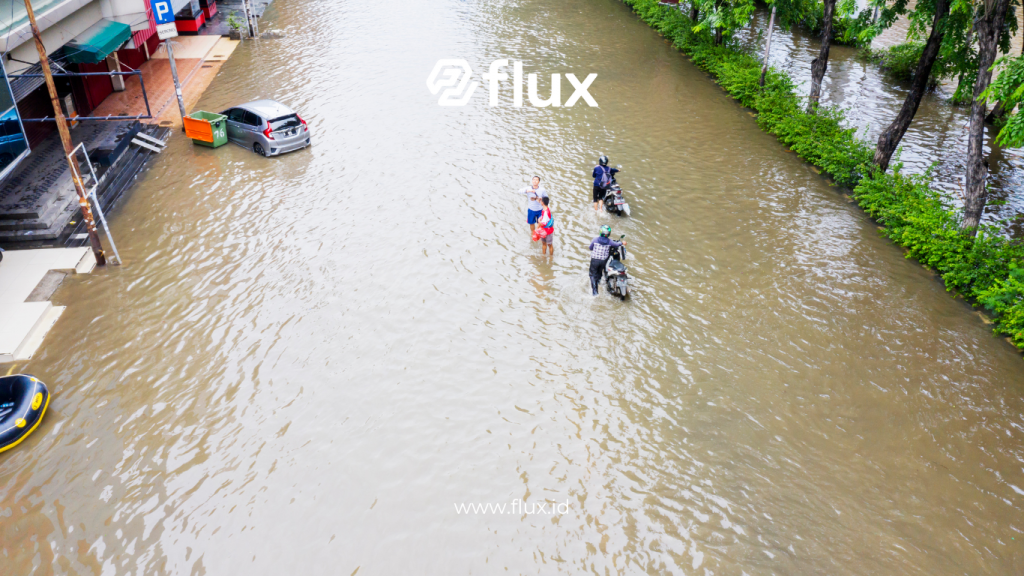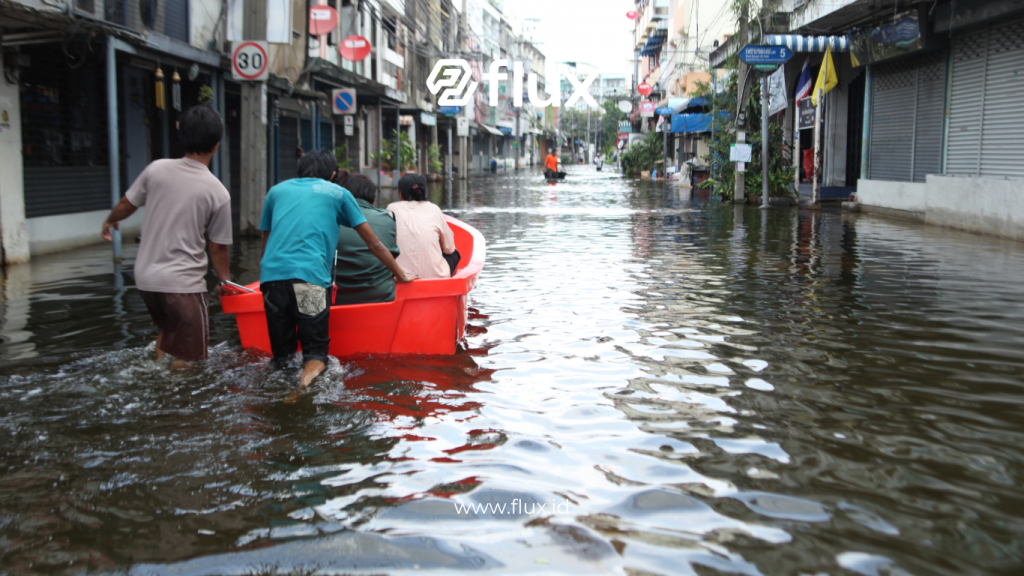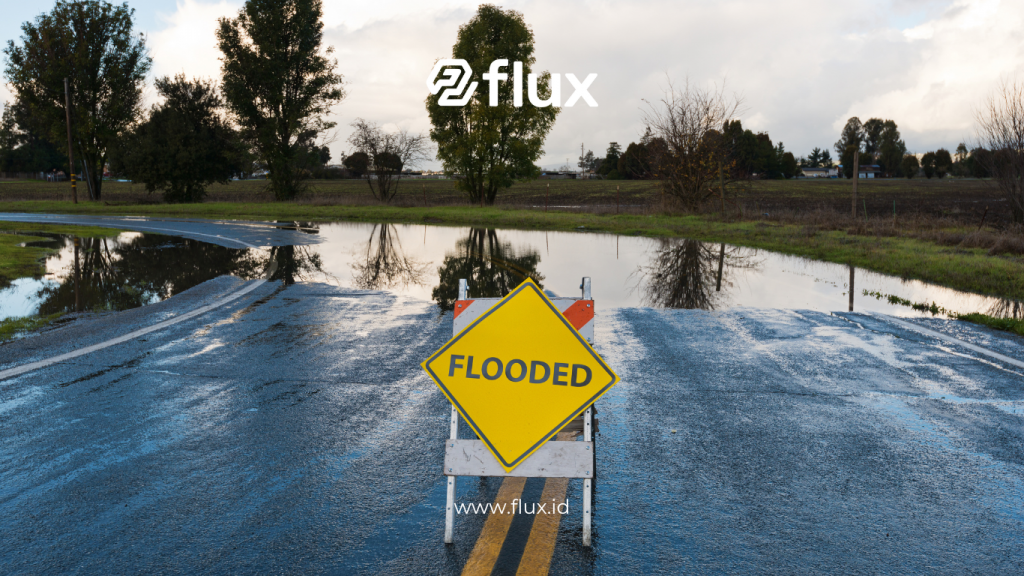Don't miss our holiday offer - 20% OFF!
Floods are one of the most frequent natural disasters, often causing severe damage to communities and economies. To reduce the impact of floods, Internet of Things (IoT) technology has rapidly evolved as an innovative solution. IoT enables real-time monitoring and data analysis, providing critical information for flood disaster mitigation. This article will discuss how IoT is used in flood prevention and its benefits in disaster mitigation.
Contents
What Is IoT, and How Does It Work in Flood Prevention?

Read More: Pressure Sensors: Unveiling Advanced Flood Monitoring Secrets
The Internet of Things (IoT) is a network of physical devices connected through the internet to collect and exchange data. In flood prevention, IoT can monitor environmental conditions, such as rainfall levels, water heights, and soil quality in flood-prone areas. IoT sensors can send real-time data to relevant authorities, enabling faster and more accurate decision-making in response to potential floods.
Examples of IoT technology used in flood prevention include:
- Water Level Sensors: Installed in rivers or drainage systems to monitor water levels. When water reaches a critical level, the IoT system sends early alerts to officials and communities.
- Rainfall Sensors: These devices detect high rainfall levels, which may indicate flood risk. Data is then sent to a control center for further analysis.
- Soil Quality Sensors: These sensors measure soil moisture, providing insights into potential landslides or flooding caused by saturated soil.
Benefits of IoT in Flood Disaster Mitigation
1. Early Detection and Warning:
IoT allows systems to detect early signs of flooding by collecting data from various sensors. With this information, authorities can issue early warnings to residents and activate evacuation or protection measures before flooding occurs.
2. More Efficient Resource Management:
IoT enables more efficient resource management in flood disaster response. For instance, sensor data can help identify areas that need more attention in terms of infrastructure repair or drainage system maintenance.
3. Faster Response:
With real-time data availability, disaster response teams can act more quickly and effectively, reducing damage and saving lives.
4. Cost Savings:
Investing in IoT infrastructure for flood prevention can reduce the costs associated with responding to large-scale disasters. Prevention is generally less expensive than handling the aftermath of a disaster.
5. Infrastructure Monitoring and Maintenance:
IoT allows for continuous monitoring of infrastructure vulnerable to flooding, such as bridges, dams, and drainage channels, helping to enable timely maintenance and reduce the risk of structural damage from flooding.
Implementing IoT in Flood Warning Systems

Read More: Predicting Floods: The Role of Rainfall Sensors
IoT-based early warning systems are one of the best ways to reduce flood risks. These systems involve several key components, including sensors, communication systems, and a control center that can analyze the data received. Here are the steps for implementing an early warning system:
- Installing Sensors:
Sensors to measure rainfall, water levels, and soil moisture are installed in strategic locations such as rivers, lakes, and main drainage channels. - Data Collection and Processing:
Data collected by sensors is sent to a control center via a wireless network. In the control center, this data is analyzed to detect early signs of potential flooding. - Early Warning:
When data indicates a high-risk condition, the early warning system sends notifications to local authorities and the public through various channels, such as text messages, mobile apps, or sirens. - Evaluation and Action:
Based on the received data, authorities can take preventive measures, such as closing overflowing drainage channels or evacuating residents from flood-prone areas.
Case Studies: Using IoT for Flood Mitigation in Various Countries
1. Japan:
Japan utilizes IoT technology for flood mitigation. In Tokyo, water level sensors are installed in major rivers to monitor water flow and detect abnormal rises. If there are signs of flooding, the early warning system informs at-risk residents.
2. India:
In India, major flood-prone cities like Chennai use IoT sensors to monitor drainage systems. With this system, authorities can identify when drainage systems are full and need maintenance to prevent flooding.
3. United States:
In the United States, cities like Miami have implemented rainfall and water level sensors to monitor potential flooding from tropical storms. This system has proven effective in reducing response times and saving lives.
Challenges in Implementing IoT for Flood Prevention

Read More: Flood Anticipation with IoT, Direct Monitoring from Smartphone
Despite the promising solutions IoT offers, some challenges need to be addressed in its implementation:
1. Limited Infrastructure:
In some areas, particularly in developing countries, infrastructure limitations can hinder the installation and operation of IoT sensors. Significant investment in communication infrastructure and maintenance is required.
2. Data Security:
IoT relies on data collection and transmission over the internet, which can be vulnerable to cyber-attacks. Therefore, it is essential to ensure that collected data is protected and secure.
3. Dependence on Technology:
The success of IoT-based early warning systems heavily depends on technology availability and good management. If there is a network disruption or device malfunction, the system cannot provide accurate warnings.
4. Implementation Costs:
Installing an IoT system that includes many sensors and communication networks requires significant upfront costs. However, these costs can be offset in the long term by reducing flood-related losses.
Conclusion
Utilizing IoT for flood prevention is a significant step forward in disaster mitigation. With the ability to detect early flood signs and provide rapid responses, this technology can reduce the impact of flood damage, save lives, and lower costs. Although some challenges need to be overcome, such as infrastructure and data security, the potential benefits of IoT for flood prevention are vast. Investing in this technology will not only help reduce flood risks but also improve the quality of life and safety of communities in flood-prone areas.
Through the use of IoT, we can create smart solutions that monitor, analyze, and respond to environmental changes in real-time, making flood prevention more effective and efficient.





